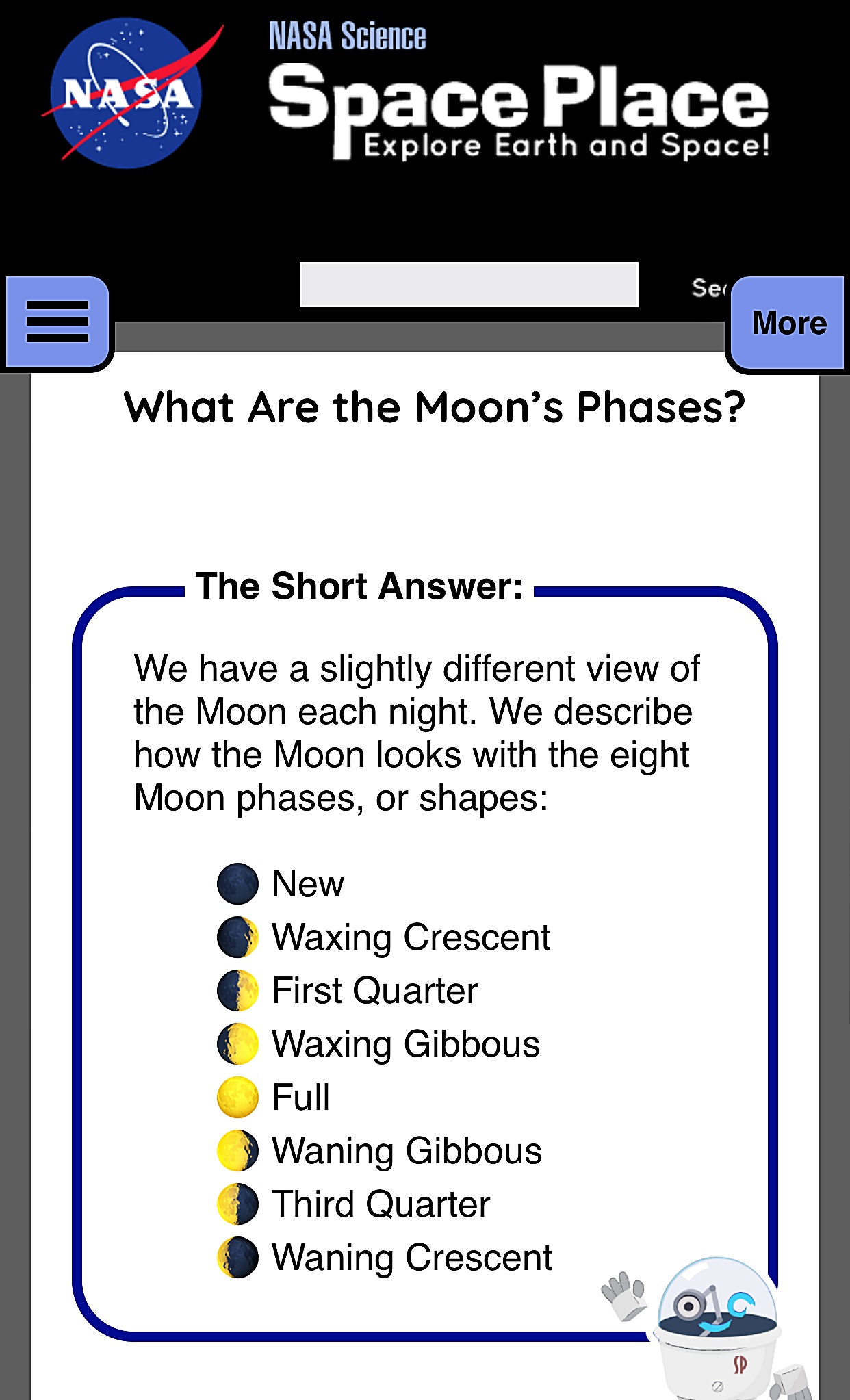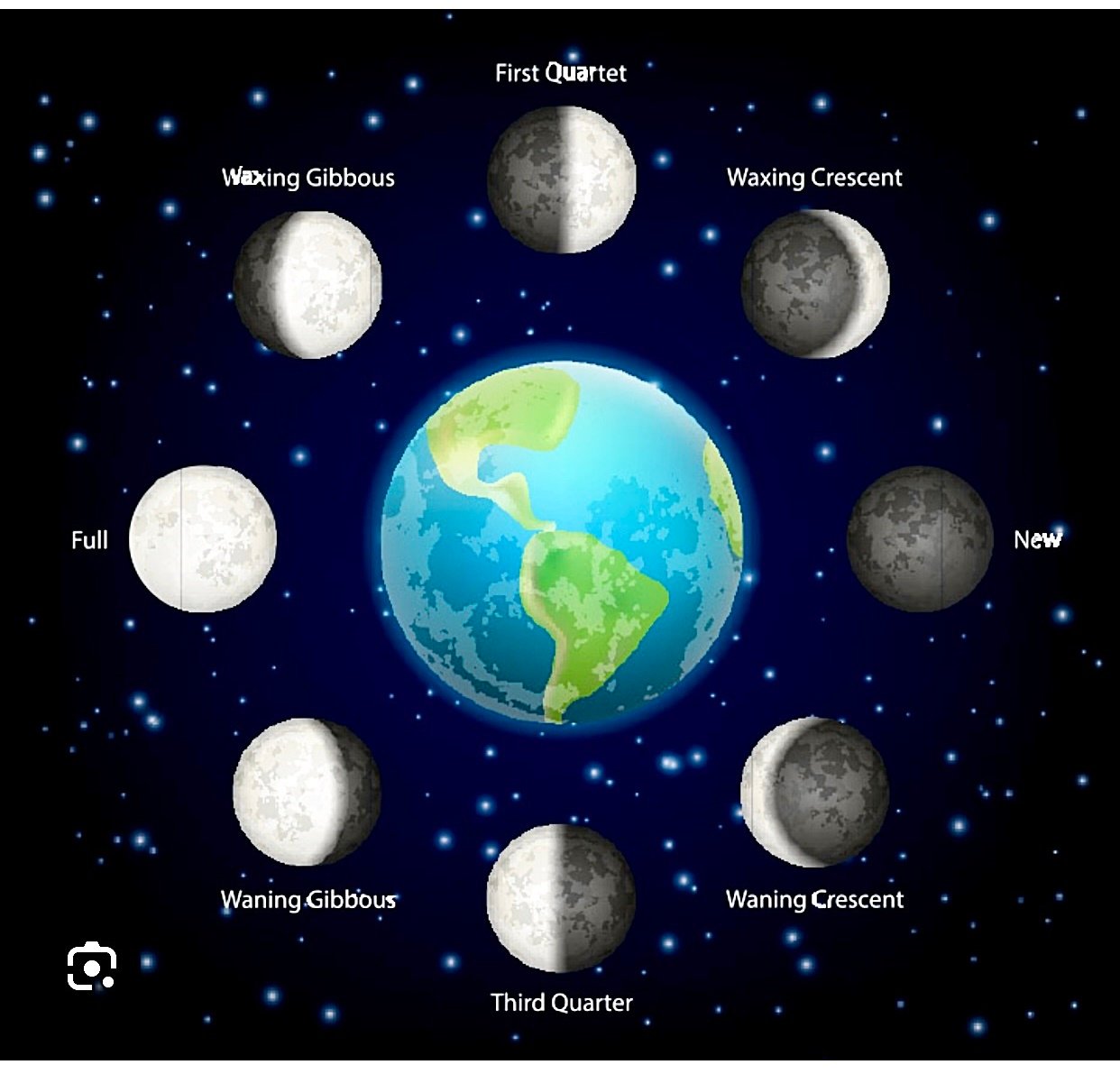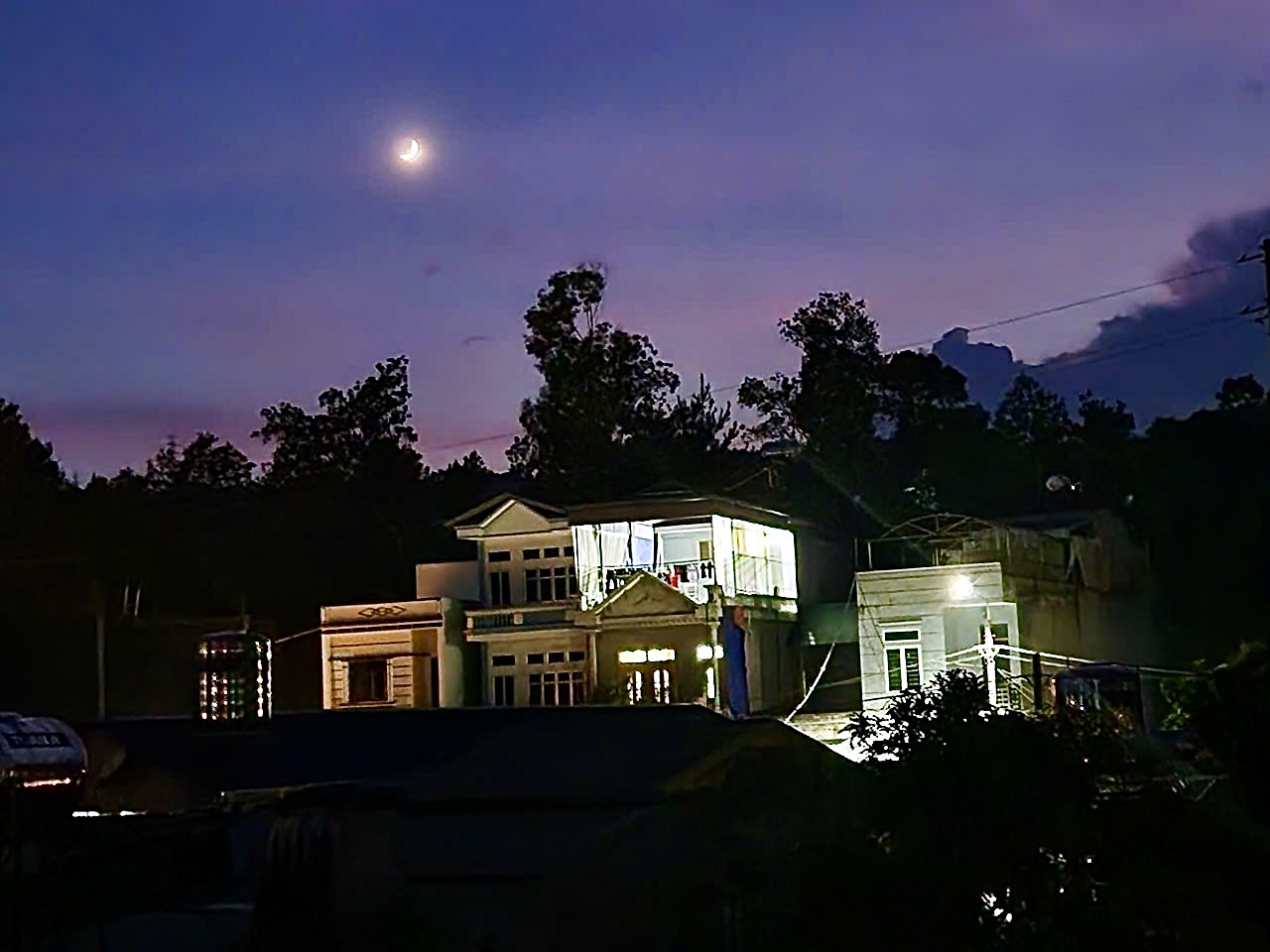Not counting foreign authors or authors from previous generations, we also see young contemporary domestic authors publishing short stories such as Under the Crescent Moon , the social psychological story collection Crescent Moon , or a series of poems and songs called Crescent Moon .
Outside of the field of literature and art, these two words seem to be rarely spoken and written in daily life. Therefore, on forums, we often see the question: "What is the waxing and waning moon?"
There are quite a few answers from newspapers, forums, astronomy clubs or "feng shui experts". However, the explanations seem to be inconsistent, confusing, and especially, the articles almost have one thing in common: the waxing and waning moons are crescent moons, on the 7th or 8th and 22nd or 23rd of the lunar calendar.
To understand clearly, first of all, look to dictionaries. But it can be seen that many dictionaries today do not have these two entries; some that do have them have unclear or incorrect explanations.
The Sino-Vietnamese dictionary compiled by scholar Dao Duy Anh in 1932 wrote:
"Shang Xuan – the 8th or 9th lunar day, when the moon rises in a crescent shape"; "Hai Xuan – the 22nd or 23rd lunar day, the moon is shaped like a crescent (dernier quartier de la lune)". The Shang Xuan moon is "... when the moon is in a crescent shape (usually the 7th, 8th, or 9th lunar day)"; The Hauen Xuan moon is "... the moon has waned into a crescent shape (usually the 22nd or 23rd lunar day)".
The French annotation in parentheses here means "last quarter of the moon", while in the entry for quarter moon there is no corresponding annotation.
The very popular Hoang Phe Dictionary (or Vietnamese Dictionary ) today explains that:
Thus, the two dictionaries do not agree when describing the shape of the moon on the same day. According to Dao Duy Anh, the waxing and waning moons have an arc shape; according to Hoang Phe, they have a crescent shape.
Natural Science textbooks also state that on the 8th and 23rd, the moon is in a crescent shape, but do not use the two words waxing and waning to name them like the two dictionaries mentioned above.
Another article said to be translated from a Japanese website (https://gokuraku-shujo.blogspot.com) has a strange interpretation, stating that the word "hypotenuse" here refers to the bowstring, that is, the straight line connecting the two ends of the bow, similar to saying "hypotenuse" is the straight line connecting the two ends of the two perpendicular sides in a right triangle. And then, when the hypotenuse is above the bow, it is called "thuong hypotenuse"; conversely, when it is below, it is called "ha hypotenuse". It is impossible to know whether this is the interpretation of the Japanese author or the translator into Vietnamese!
Below are some ideas to help clarify the above-mentioned problems. The word "moon" is used to refer to the bright part we see on the near side of the moon, which is always facing the earth, and all dates are lunar dates.
Definition of words
Shang/Xia 上/ – above/below; go up/down; at first/later; before/after (in time or order), such as "shang xuan" – the first ten days of the lunar month; "ha ban nien" – the second half of the year.
Bow 弦 – bow, bow.
Shang Xuan 上 弦 – bow-shaped moon at the beginning of the month.
Lower moon 下 弦 – bow moon at the end of the month.
Waxing moon – the first half of the month, the moon gradually fills (from no moon to full moon).
Waning moon – the moon in the second half of the month, the moon gradually wanes (from full moon to no moon. No moon is also called New Moon on the first day of a lunar month).
Crescent – crescent.
Waxing crescent – first crescent moon of the month (same meaning as waxing crescent).
Waning crescent – the last crescent moon of the month (same meaning as waning crescent).
Thus, just based directly on the above meaning of the words seen, the waxing and waning moons are curved like a bow or a crescent, not a half moon.
In Vietnamese, new moon, first quarter moon, full moon, and last quarter moon are the four different phases of the moon. In English, they also have their own names, respectively new moon, first quarter moon, full moon, and third quarter moon.

Phases of the moon, seen from the northern hemisphere
Photo source: NASA Science

Phases of the moon, seen from the northern hemisphere
Photo source: Sefaria the Moon's phases
Phases and dates of appearance
It is known that a lunar cycle is 29.53 days long, equal to the average of a lunar month. If we divide that cycle into 4 equal parts, each part is 7.38 days long. The first quarter moon of the month will occur at the end of the first quarter, that is, the 7th or 8th; the full moon will occur at the end of the second quarter, that is, the 15th (full moon); the last quarter moon of the month will occur at the end of the third quarter (the 22nd or 23rd) and the new moon will occur at the end of the fourth quarter. Thus, on the 7th or 8th and the 22nd or 23rd, which the dictionaries and many Vietnamese texts mentioned above, the moon is a half moon, not a waxing or waning moon. They are only different in that the first quarter moon is gradually filling up to become a full moon, while the last quarter moon is waning in the opposite direction to become a gradually thinning crescent, and then to become no moon.
Astronomers can calculate the exact time and date of the four phases mentioned above. Meanwhile, the waxing and waning moons are different, they do not occur at one time, but last for an entire quarter. The waxing moon occurs throughout the entire first quarter, but the crescent is most clearly seen on the nights of the 4th, 5th and 6th, because before the 4th the crescent is too thin, and after the 6th it has filled up to almost a half moon, making it difficult to distinguish with the naked eye.
Similarly, the waning moon occurs throughout the last quarter, but is most visible on the nights of the 26th, 27th, and 28th, because before the 26th it is almost half-moon, and after the 28th it becomes a very thin crescent and gradually wanes until it disappears completely on the last day of the month.
Going back, the Dao Duy Anh dictionary writes that the waning moon on the 22nd or 23rd has an arc shape, with the French annotation being the last quarter. Indeed, the waning moon occurs during the entire last quarter, but it cannot be written as on the 22nd or 23rd, because that day is only the beginning of the last quarter.
Observe the moon phases
Variations in the geometry of the Earth-Moon-Sun system cause the phases of the moon, which repeat every 29.53 days. The moon is in a synchronous orbit, so it always keeps the same side facing the earth.
The Earth rotates around its axis from west to east once every 24 hours, so in reality, we can see that the moon and the sun both rise in the east and set in the west. However, the time of moonrise and moonset is delayed, on average about 60 minutes later each day than the previous day.
The new moon rises in the morning at the same time as the sun, so it cannot be seen unless there is a solar eclipse. Then the moon can be seen as a dark black shadow covering part or all of the sun.
The first crescent moon (first quarter) is dark. Thus, it can be clearly seen at sunset in the west, during the days of the first quarter.

Crescent moon, photo taken by Vu Van Hoang at 19:15, August 4, 2024 (lunar calendar) in Than Uyen Town, Lao Cai
The first quarter moon rises around noon on the 7th or 8th.
On a full moon day, the full moon rises around 6 pm and sets around 6 am, almost opposite the sun. Therefore, it can be seen clearly all night long except during a lunar eclipse, when the earth's shadow partially or completely covers the moon.
The last quarter moon rises around midnight on the 22nd or 23rd.
The waning crescent moon rises around 3am and sets around 3pm. Thus, the waning crescent moon can be seen clearly from after 3am until dawn in the east, during the days of the fourth quarter.
Finally, for the richness of the Vietnamese language, the words Shang Xuan and Ha Xuan should be widely used, starting in schools. It is important to understand correctly: the Shang Xuan and Ha Xuan moons are crescent-shaped, do not occur on a fixed day, but each time lasts for the first few days of the month and the last few days of the month.
Source: https://thanhnien.vn/trung-thu-ban-ve-trang-thuong-huyen-va-trang-ha-huyen-185240913163431463.htm




















































![[Maritime News] More than 80% of global container shipping capacity is in the hands of MSC and major shipping alliances](https://vphoto.vietnam.vn/thumb/402x226/vietnam/resource/IMAGE/2025/7/16/6b4d586c984b4cbf8c5680352b9eaeb0)













































Comment (0)